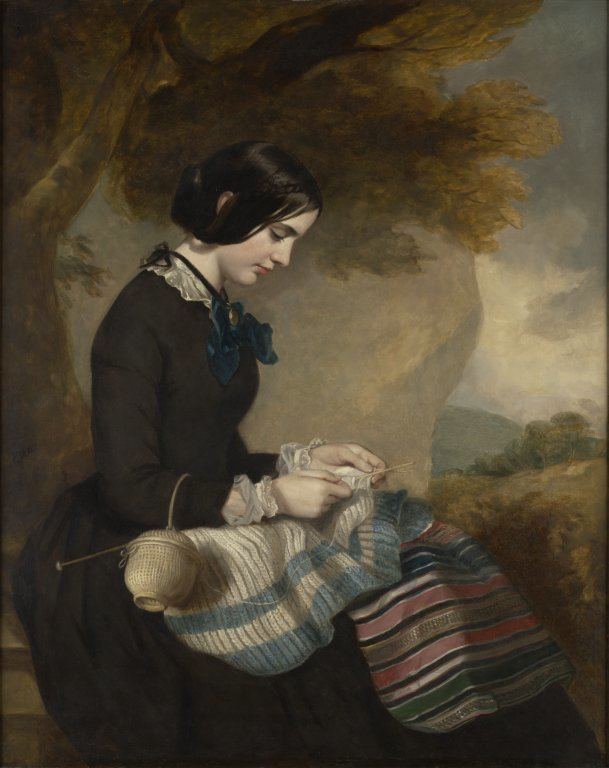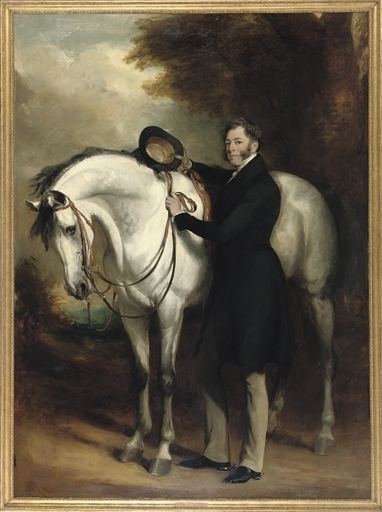Name Francis Grant Siblings James Hope Grant Artwork Melton Breakfast | Role Artist | |
 | ||
Died October 5, 1878, Melton Mowbray, United Kingdom | ||
Crossover 2012 at zionsville h s bach little fugue arr francis grant
Sir Francis Grant PRA (18 January 1803 – 5 October 1878) was a Scottish portrait painter who painted Queen Victoria and many distinguished British aristocratic and political figures. He served as President of the Royal Academy.
Contents

Life and work

Grant was the fourth son of Francis Grant, Laird of Kilgraston, near Bridge of Earn, Perthshire, and his wife Anne Oliphant of Rossie. Grant was educated at Harrow School and inherited a large sum of money on the death of his father in 1818 – a fortune which was apparently "soon spent". He had a passion for fox-hunting and other sports and initially intended to become a lawyer. However, he left his studies to take up painting, of which he was mainly self-taught – partly by copying the works of Velasquez and other masters – though he briefly spent time in the studio of Alexander Nasmyth.

He acquired a reputation as a fine painter of "sporting" subjects, and in 1834 exhibited at the Royal Academy – a picture called Melton Breakfast (which was engraved by Charles G. Lewis). In 1837 he exhibited The Meeting of His Majesty's Staghounds on Ascot Heath, painted for the Earl of Chesterfield, and in 1839 The Melton Hunt, purchased by the Duke of Wellington (both of these have been engraved, the former by F. Bromley, the latter by W. Humphreys).In 1841, he painted A Shooting Party at Rawton Abbey for the Earl of Lichfield, and in 1848 The Cottesmore Hunt for Sir Richard Sutton. In 1840 Grant exhibited an equestrian group of Queen Victoria riding with Lord Melbourne and others in Windsor Park, and at once became the fashionable portrait-painter of the day. His portrait of Lady Glenlyon, exhibited in 1842, increased his reputation, and for nearly forty years the most graceful and refined portraits in the Royal Academy exhibitions came from his studio.

Grant was elected an associate of the Royal Academy, and in 1851 an academician. In 1866, on the death of Charles Eastlake, Edwin Landseer turned down the seat of Academy President, and Grant was elected instead. He was knighted soon afterwards.

Between 1834 and 1879 he contributed no fewer than 253 works, many of which were full-length portraits, to the exhibitions of the Royal Academy. Among these works were equestrian portraits of Queen Victoria and the prince consort, painted for Christ's Hospital; the Prince of Wales; an equestrian group of the Duke and Duchess of Beaufort; Sidney Herbert, afterwards Lord Herbert of Lea; Lord John Russell, afterwards Earl Russell; Benjamin Disraeli, afterwards Earl of Beaconsfield; John Hick, afterwards MP for Bolton and Mrs Hick; General Sir James Hope Grant; Sir George Grey; Edward, earl of Derby, first lord of the treasury; Lord Clyde; Viscount Palmerston, painted for Harrow School; Viscount Gough; Lord Truro, lord high chancellor; Sir Frederick Pollock, lord chief baron; Sir William Erle, lord chief justice of the common pleas; John Sumner, archbishop of Canterbury; George Moberly, bishop of Salisbury; and John Gibson Lockhart. His portraits of the Marchioness of Waterford, exhibited in 1844, the Marchioness of Bristol, and of Mrs Markham (aka Daisy Grant – see below), exhibited in 1857, claim notice among those of ladies.
After some years of gradually failing health, Grant died of heart disease suddenly at his residence, The Lodge, Melton Mowbray, on 5 October 1878, and was interred in the Anglican cemetery, his relations having declined the usual honour of burial in St. Paul's Cathedral. His funeral was conducted by the Archbishop of York on 12 October and many of the leading British artists attended, including Edward John Poynter, Edward Armitage, Thomas Woolner, Philip Hermogenes Calderon, and the American Albert Bierstadt.
Sir Francis was the brother of General Sir James Hope Grant, and the father of Anne Emily Sophia Grant (also known as Daisy Grant or Mrs. Colonel William Thomas Markham), whose portrait, by her father, hangs in the National Gallery of Scotland, and has been noted for its depiction of Victorian womanhood. Among several sons was Ferdinand Hope-Grant, who played first-class cricket and was also a chaplain to the Prince of Wales. His niece was the eminent Victorian sculptress, Mary Grant.
